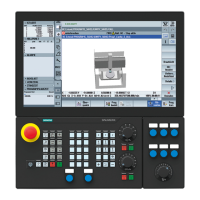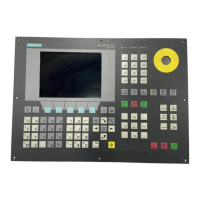Power Line Basic PLC Program (P3)
Function Manual, 08/2005 Edition, 6FC5397-0BP10-0BA0
1-1
Brief Description
1
1.1 1.1 Brief description
General
The PLC basic program organizes the exchange of signals and data between the PLC user
program and the NCK (Numerical Control Kernel), MMC (Man Machine Communication) and
MCP (Machine Control Panel) areas. A distinction is made between the following groups for
signals and data:
• Cyclic signal exchange
• Eventdriven signal exchange
• Messages
Cyclic signal exchange
The cyclically-exchanged signals consist primarily of bit arrays.
• They contain commands transmitted from the PLC to the NCK (such as start or stop) and
status information from the NCK (such as program running, interrupted, etc.).
• The bit fields are organized into signals for:
– Mode groups
– Channels
– Axes/spindles
– General NCK signals
The cyclic exchange of data is performed by the basic program at the start of the PLC cycle
(OB1). This ensures that the signals from the NCK remain constant throughout the cycle.
Event-driven signal exchange NCK → PLC
PLC functions that have to be executed as a function of the workpiece program are triggered
by auxiliary functions in the workpiece program. If the auxiliary functions are used to start
execution of a block, the type of auxiliary function determines whether the NCK has to wait
before executing the function (e.g. during a tool change) or whether the function is executed
in parallel to machining of the workpiece (e.g. for tool preparation on milling machines with
chaintype magazines).

